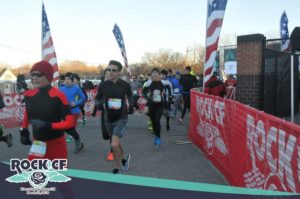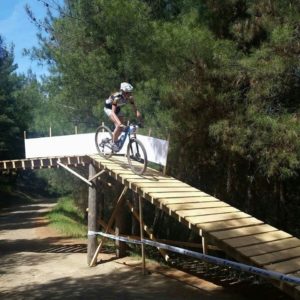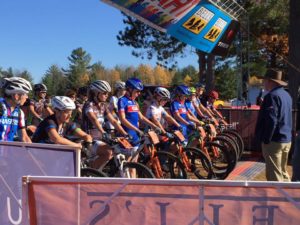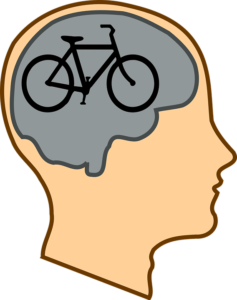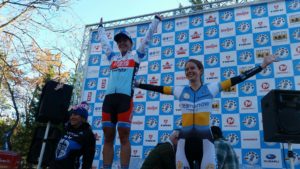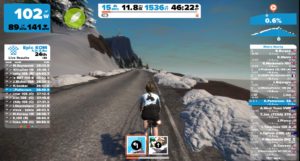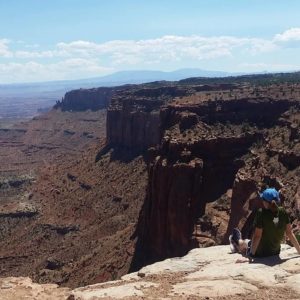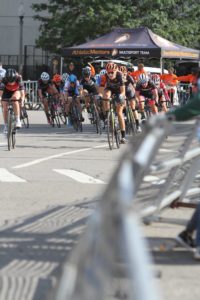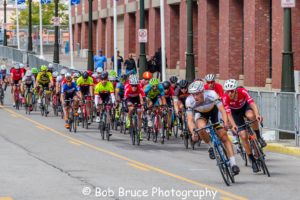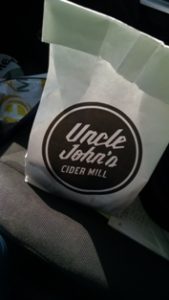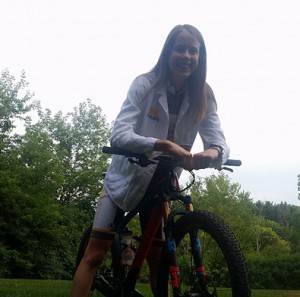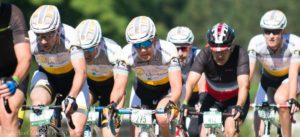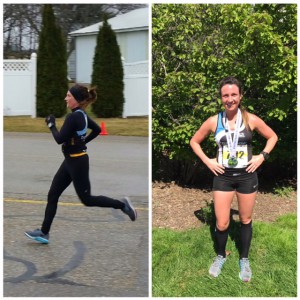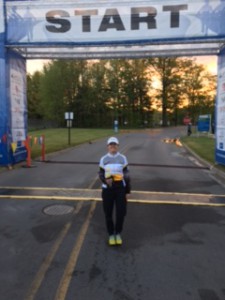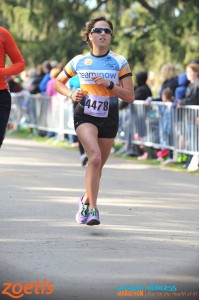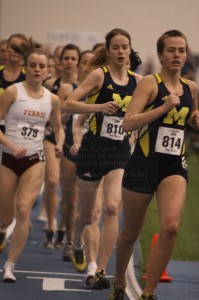–By Raquel Torres, Triathlete
Making the decision to race
Since I did not participate in many events in 2016, I was hungry to keep finding race to challenge me. After my last event in Africa in December, I spent some time thinking about my 2017 goals. There is the commitment to make decisions about what races to sign up for, to work for me and for my sponsors. But this is difficult living in Michigan, where the winter is very cold and long and there are not many events. I did a few half marathons with very good results achieving my goals. This and the other reasons motivated me to look for a new objective early in 2017.
PRO or Age Group category?
I decided to try this whole year as a Pro in the Ironman races, to challenge and to try the Professional category. My coach Mark Olson always says to me “In the Age Group category you would be first.” Although I was scared, the opportunity to register as age group had passed so I signed up as a Pro for the 70.3 in Dubai as it was economically feasible. Even considering the obstacles of the distance, the long trip and going alone, but I felt that it would be worth it as I felt the need to compete.
Training Now for 70.3
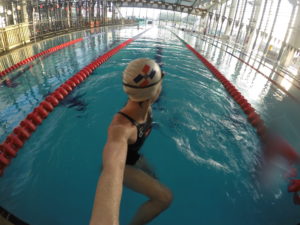 In terms of the training, comparing the sprint distance (750 meters swim, 20k draft legal bike and 5k run to a 70.3 Half Ironman (1900 meters swim, 90k bike and 21k run) it’s a big step. I did not have a lot of time, but the desire was larger than that. The first step was to connect with my coach Mark, about the goal and to start to work. We started to work, designed the plan, with the objective to race on 27 January so we had 4 weeks. I was very motivated and focused to work harder than ever with lots of emphasis in the details. My attitude was more positive than ever every day. The hard winter in Michigan was spent with days like Christmas and New Year’s Day training like any other day…
In terms of the training, comparing the sprint distance (750 meters swim, 20k draft legal bike and 5k run to a 70.3 Half Ironman (1900 meters swim, 90k bike and 21k run) it’s a big step. I did not have a lot of time, but the desire was larger than that. The first step was to connect with my coach Mark, about the goal and to start to work. We started to work, designed the plan, with the objective to race on 27 January so we had 4 weeks. I was very motivated and focused to work harder than ever with lots of emphasis in the details. My attitude was more positive than ever every day. The hard winter in Michigan was spent with days like Christmas and New Year’s Day training like any other day…
I was running outside most of the time with very low temperatures and during a strong snowstorm I made the mistake to run a very long session on the treadmill. The change of surface brought on a minor injury. I was careful and stopped running until I was able to get an appointment with the doctor about 10 days later, after 10 therapy sessions and about 22 days without running, the doctors ordered x-rays and other tests and told me that with rehab and all things normal I could complete the event. I already had the plane ticket and the hotel was reserved, the event registration was done and the hard work and emotion for the long training was done.
One of the advantages of triathlon is that you have options; there are no excuses not to work. I decided to be more positive than ever even with many obstacles. I was psyched up, focused and at the same time a bit scared for the long flights and to try this new distance with these obstacles, I have to admit that some days I thought I was nuts.
The event was getting closer and I was training harder on the bike, swimming and rehab, weight training and nutrition, the things I could control. Aside from the more than 1001 things as a mother and coach. The day was approaching, my foot still hurt, but with my faith first I concentrated on the details and put aside what was not in my control.
Pack, prepare the trip logistics, leave everything in order at home for my daughter, everything methodically and with great attitude enjoying the process and the adventure. Giving 100% with a good attitude.
Race Lead-Up
I have learned that its good during trips to take with me as much food as possible for at least two days. For this trip, I brought my protein, spinach, basic supplements for my shakes, my bread. Some snacks, dehydrated fruits etc. I found a very good deal on a apartment style hotel where I could cook, as it was more affordable, comfortable and I could maintain my nutrition as close to the same as at home.
Arrival day: Set up the bike; go to the supermarket, attention to nutrition. Some mechanical problems, I was able to find a bike shop, where could I ride, where to swim, where to run? Details…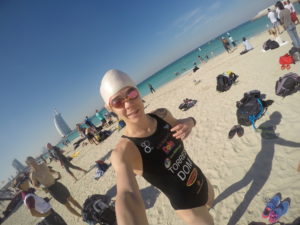
I had to figure out where to ride legally (its not permitted to ride in certain roads), sometimes I felt bad as I was not resting enough and I started to have invasive thoughts but I kept positive and able to focus on what was under my control.
3 Days before race: I was to run 15 at race pace and my foot was really hurting so I thought My God would I be able to complete the race? I felt horrible, tired, lethargic and with lots of pain. But I focused in God and to keep a positive attitude and my nutrition.
Race day!
Swim: I started slow, a small group formed, I had an easy pace and it was a really easy swim, some waves. I was able to keep the same pace throughout the swim race.
Bike: On the bike was my plan to keep up with hydration and nutrition, which I was able to do well. I had worked on the watts with coach mark to keep them at ab average of 210 watts and I was able to hold that pace without problems. I was breaking the race in micro-moments, thinking about the now and here.
Run: The initial plan was to keep a pace of 4:20 min/km keeping up with hydration I was concerned to have pain in my foot and it bothered me for the first 5 km only, someone ran in front of me and I fell down but quickly got up and kept running. I cut myself a bit and the first aid people came right away to assist me and I told them I was ok. I had my pace and at 10 km I remembered that I had forgotten to wear my socks! Right then, I had some blisters but I just said “Raquel, excuses are thousands do the best you can!”
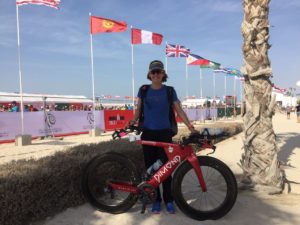
I admit that I cried with happiness when I crossed that finish line. Just because I was able to complete it, as only God and I know how many obstacles we had to endure. The satisfaction to know that I did my best is priceless. I was able to complete in 4:32 finishing 16th overall in the Pro category. It is an honor for me to represent my flag at the highest level of international triathlons in the long distance. I believe that we all should challenge ourselves in any area we want to grow, and if we have the passion it’s a lot more fun to challenge ourselves, always having fun and with a positive mind.
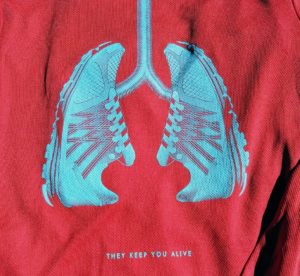 problems as well as difficulty absorbing nutrients. It can be devastating and even with current treatments, the median life span is 41. Emily is an exceptionally charismatic person and captivated all of us as she told her story of essentially taking back her lung function and life through running and improved nutrition. Her story is also captured in a series of short videos by BreadTruck films.
problems as well as difficulty absorbing nutrients. It can be devastating and even with current treatments, the median life span is 41. Emily is an exceptionally charismatic person and captivated all of us as she told her story of essentially taking back her lung function and life through running and improved nutrition. Her story is also captured in a series of short videos by BreadTruck films.





